19 UMMA Objects
19 UMMA Objects

Japanese (Japanese (culture or style))
Tsuba (sword guard) with design of Kanzan (Chinese, Han Shan) and Jittoku (Chinese, Shihde), two Zen eccentrics
1700 – 1732
Gift of Mr. and Mrs. Robert T. Weston
1978/2.5

Japanese (Japanese (culture or style))
Tsuba (sword guard) with iris design
1775 – 1785
Gift of Mr. and Mrs. Robert T. Weston
1978/2.8
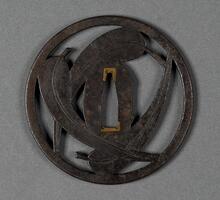
Sadanobu
Tsuba (Sword guard)
17th century
Museum purchase made possible by the Margaret Watson Parker Art Collection Fund
1966/1.103
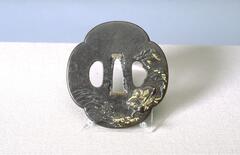
Harunori
Tsuba (sword guard) with inlaid design of samurai on horseback at the shore
18th century
Gift of Mr. and Mrs. Robert T. Weston
1978/2.2

Kinai School
Tsuba (sword guard) with design of three pawlownia crests and vines
1745 – 1755
Gift of Mr. and Mrs. Robert T. Weston
1978/2.4
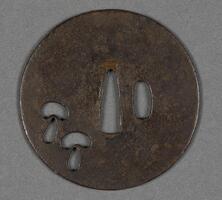
Japanese (Japanese (culture or style))
Tsuba (sword guard) with mushroom design
16th century
Museum purchase made possible by the Margaret Watson Parker Art Collection Fund
1966/1.100
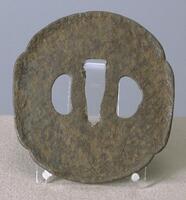
Japanese (Japanese (culture or style))
Tsuba (Sword guard)
15th century
Museum purchase made possible by the Margaret Watson Parker Art Collection Fund
1966/1.99

Japanese (Japanese (culture or style))
Tsuba (sword guard) designed as a Chinese table with lion dog sculpture
19th century
Transfer from the School of Art and the College of Architecture and Urban Planning.
1997/1.229

Japanese (Japanese (culture or style))
Tsuba (sword guard) with design of Kanzan (Chinese, Han Shan) and Jittoku (Chinese, Shihde), two Zen eccentrics
1615 – 1868
Gift of Mr. and Mrs. Robert T. Weston
1978/2.9
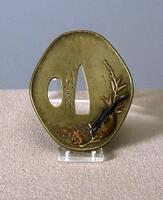
Seishinsai
Tsuba (sword guard) with design of blowfish, shrimp and plant
19th century
Gift of Mr. and Mrs. Robert T. Weston
1978/2.3

Okada Masatoyo
Tsuba (Sword guard) with design of dragon among clouds
19th century
Gift of Mr. and Mrs. Robert T. Weston
1978/2.6
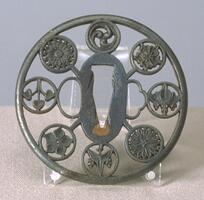
Japanese (Japanese (culture or style))
Tsuba (sword guard) with eight family crests
19th century
Gift of Mr. and Mrs. Robert T. Weston
1978/2.7
Loading…
